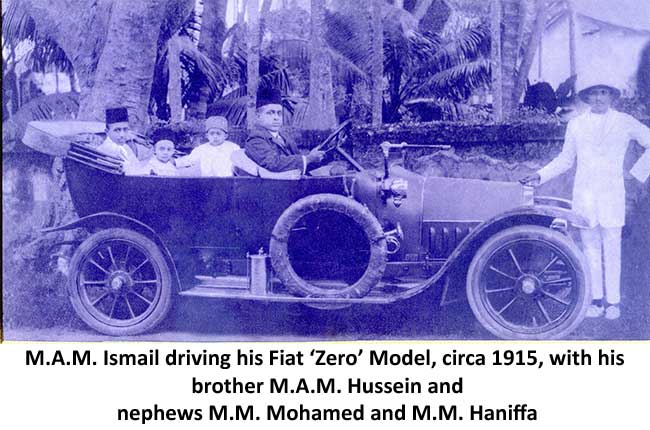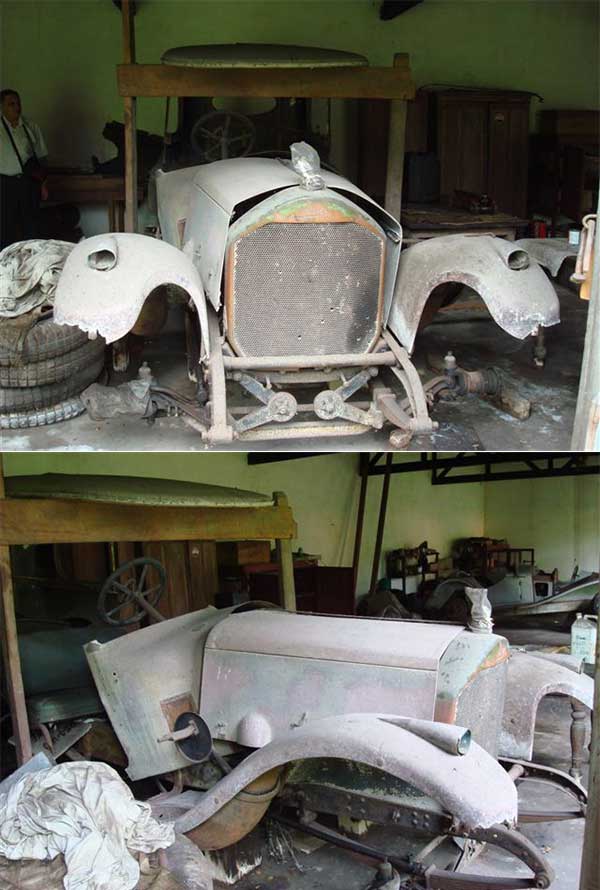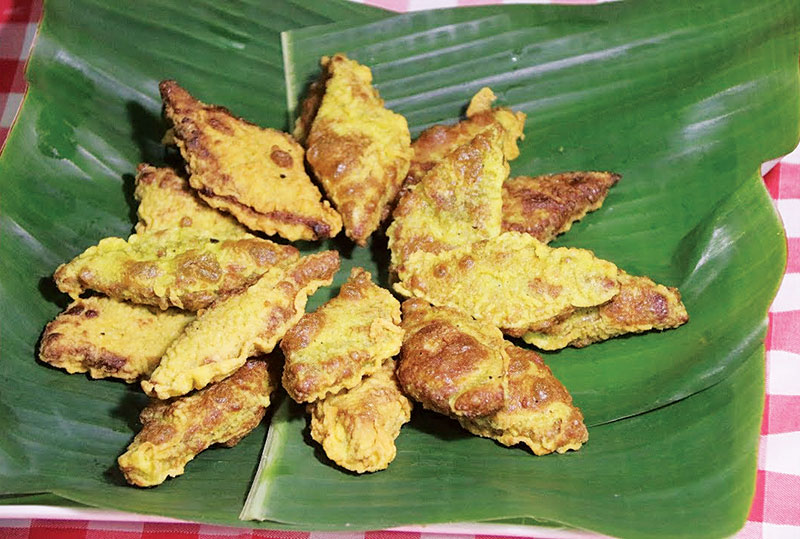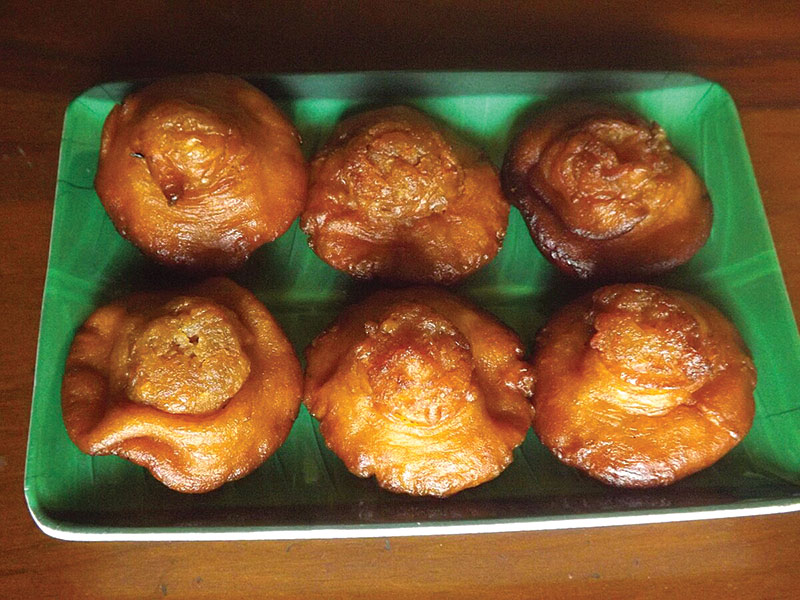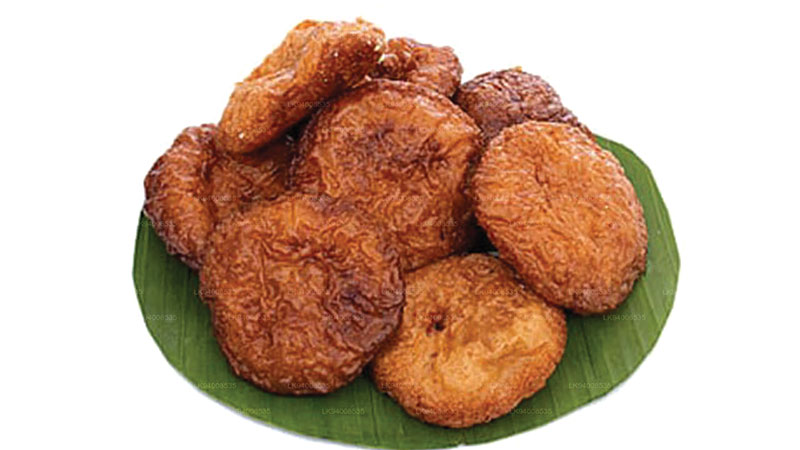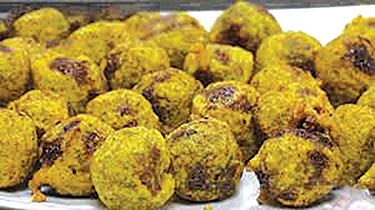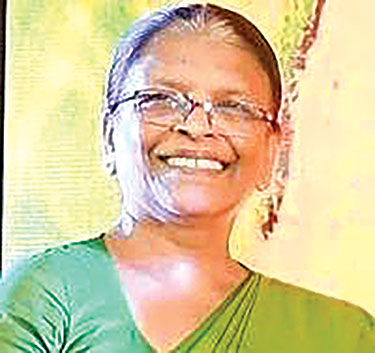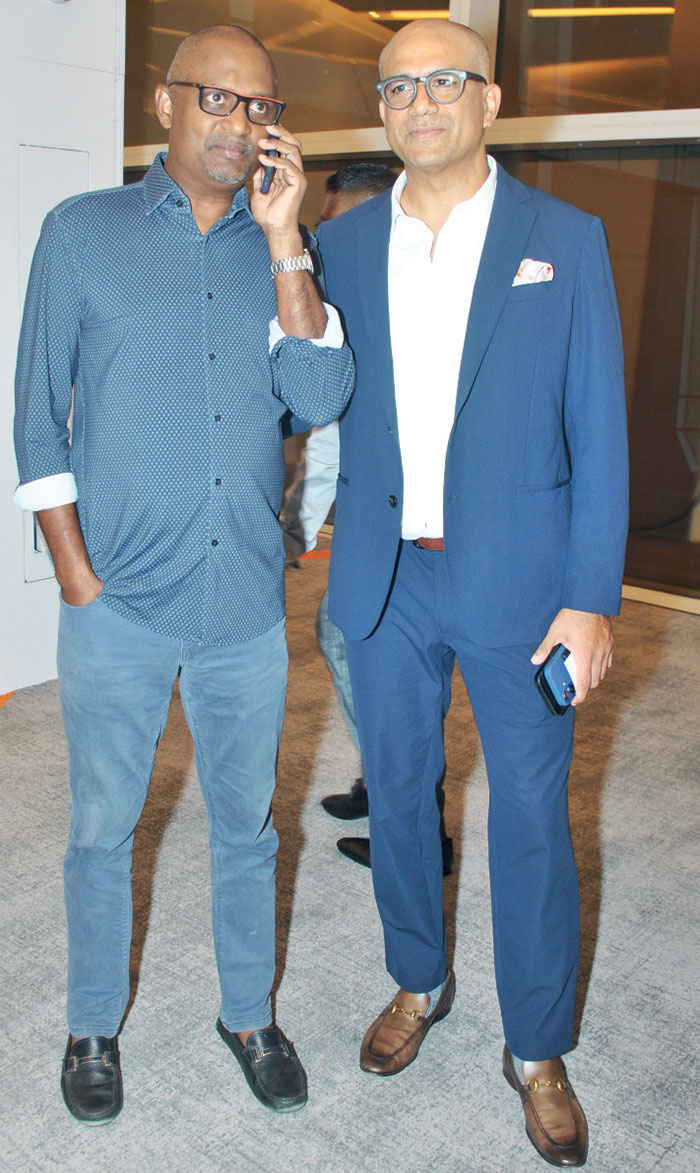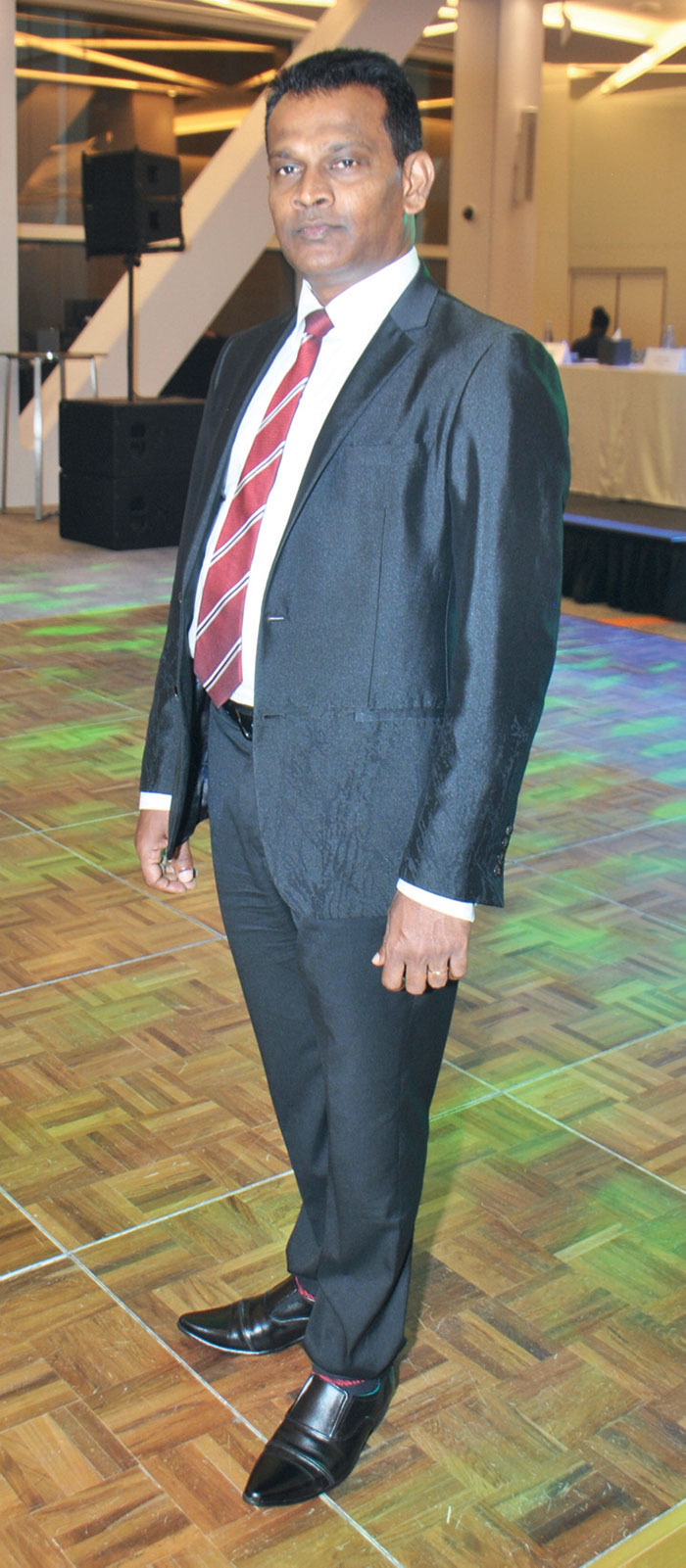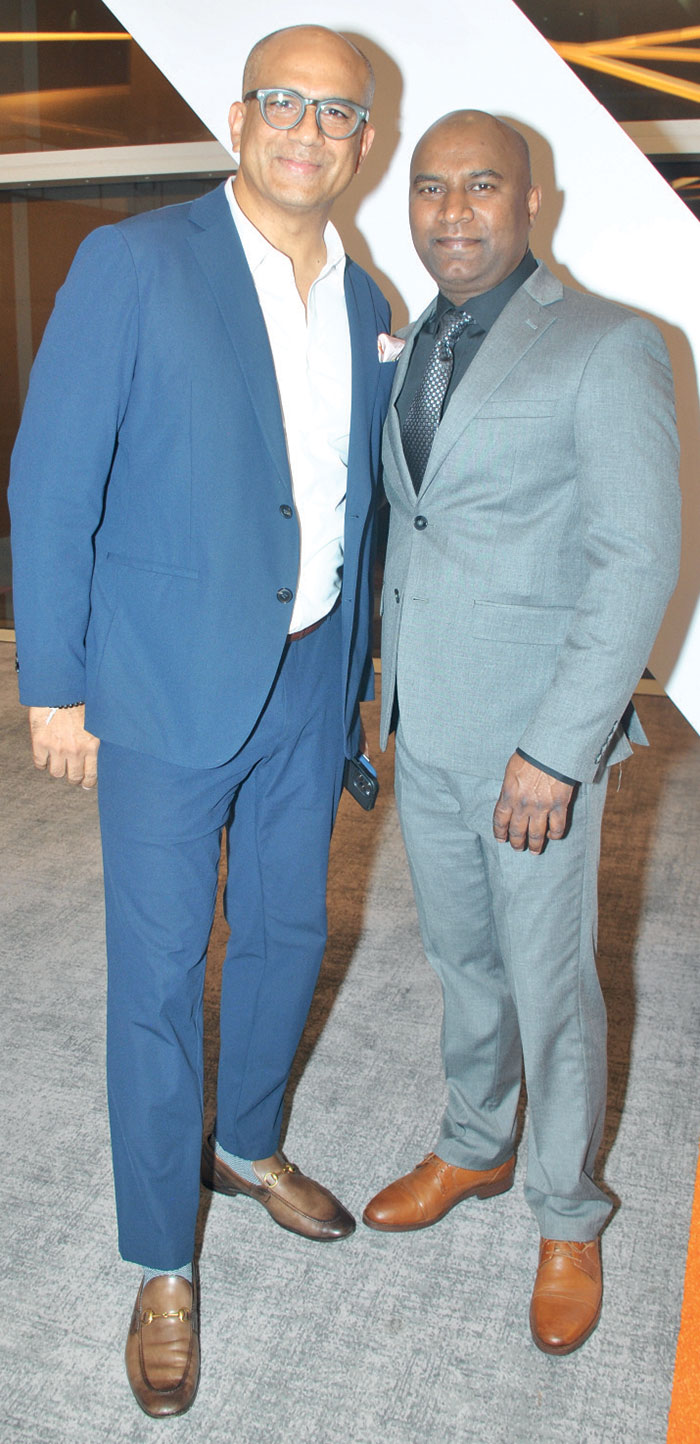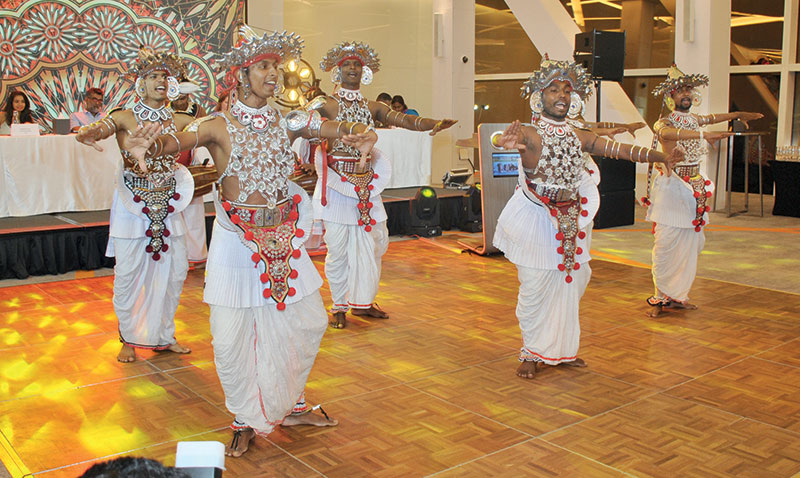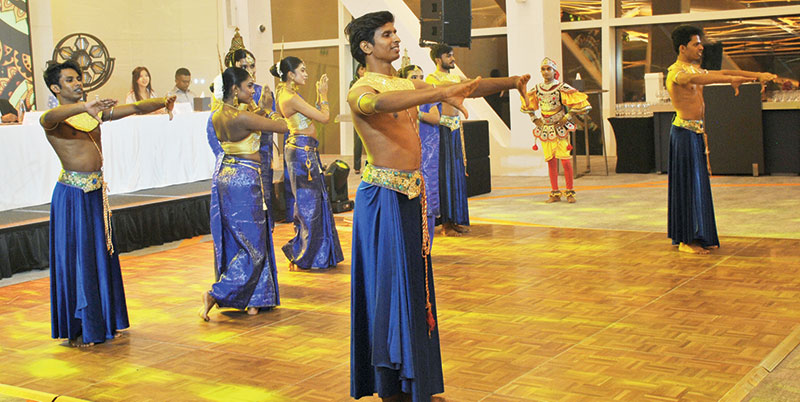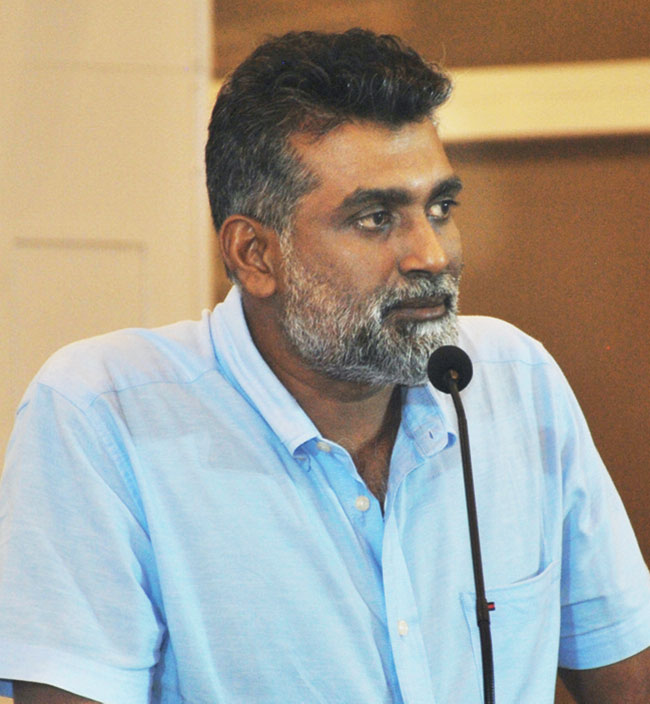Life style
Rare Napier in Ceylon

1924 NAPIER 40/50 H.P. LIMOUSINE BY CUNARD, C-5579 – Ali Azeez –
My nephew Mr. Ali Azeez, who is a vintage car enthusiast, asked me to write what I know about the Napier car that my father (Mr. M.A.M. Hussein) owned from the mid-1920s until the end of World War II, in the mid-1940s.
My father had seen this car in a London motor car showroom. He told me that the agent had told him that the car had originally been built by the Napier Company for the King of Siam, and that it had been made specially for use in the tropics. It so happened that a French motor company which made the Delahaye car had successfully tempted the King to abandon the Napier for the Delahaye which they wanted him to buy. In the result, the Napier Company had to look for another buyer.
Those were days when royalty still retained some of the glamour that now surrounds famous pop stars and sportsmen. Further, the makers of luxury goods were vying with each other for the custom of a privileged few. Mass production was still to come.
When my father succumbed to the persuasion of the seller, he still had to find the money for the purchase. He had an indulgent father of means who solved that problem for him; in fact, my father in casual conversation told me that the cost was Rs. 48,000/-.
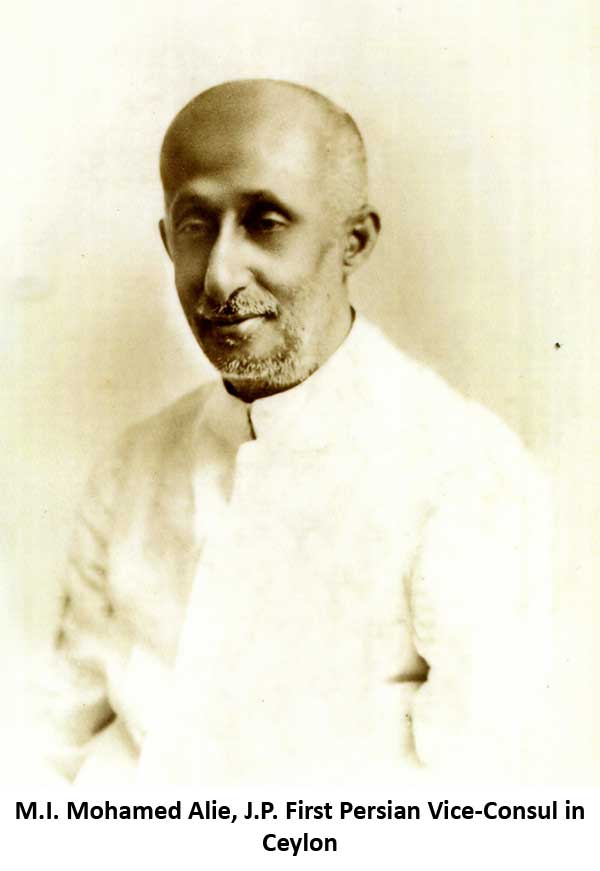 I wish I could give more information about the technical aspects of that model, but it could be looked up in a vintage cars handbook without much difficulty. I know that, not long after, the Napier Company gave up making cars and started to make aeroplane engines. That too did not last for much time.
I wish I could give more information about the technical aspects of that model, but it could be looked up in a vintage cars handbook without much difficulty. I know that, not long after, the Napier Company gave up making cars and started to make aeroplane engines. That too did not last for much time.
My memories are those of a child; the car looked old fashioned compared with the models that came in the thirties. When very occasionally my father took his children for a ride in it, we cringed inside as we felt like specimens in a museum piece. It did seven miles to the gallon. It looked a ‘white elephant’. Its luxury was lost on us.
Rich leather seats, a windscreen that was tinted to cut the tropical glare, a glass partition with a sort of speaker or telephone to speak to the chauffeur in front, two vases in vase holders fixed on either side of the rear mirror, two fans for the passengers at the back and a clock with the name “Napier” printed in italics on it fixed to the dashboard.
When the Second World War broke out in 1939, and petrol rationing was introduced, the car never got on the road. Towards the end of the War in 1945, my father gifted the car to S. Thomas’ College, Mt. Lavinia, his old school. I was not in Sri Lanka then, but I was told that it was for sometime used by the school to transport vegetables. That must have been the supreme humiliation. The Napier was rescued from there and is now in the collection of Mr. J.P. Obeyesekere.
Almost 60 years later, I happened to be in Las Vegas and came to know that on the fifth floor of the Imperial Hotel there was a fabulous motor car museum. I went there and saw some historic cars. The car used by Hitler when he came for the capitulation of Paris, the roadster from which Mussolini and his mistress were dragged to be hanged in a public square, the car which President Kennedy was riding when he was shot and killed, the car that Earl Mountbatten used when he was the Supremo of the South East Asian Command were all on display. Then unexpectedly, I saw a dark blue Delahaye with the notice attached before it “The car that was owned by the King of Siam in 1927”. I must say that it looked more modern though less imposing than the Napier. Had the King not been tempted by the French, it might have been the Napier that would be there.
On a purely sentimental note, I wish that Mr. Obeyesekere would sell or gift that Napier to my nephew, Mr. Ali Azeez. In a sense. It would mean that not only birds and misdeeds but also motor cars can come home to roost. (by Mahdi Hussein)
Technical Details of Napier 40/50
(Ali Azeez continues) After World War One, motor car production took second place to aero engines. The only Napier model made during this time was the luxurious 40/50 hp, designed to compete with the Rolls-Royce Silver Ghost. The design of its engine – a 6-cylinder 6,177 cc unit with detachable cylinder head, single overhead camshaft, seven-bearing crankshaft, and aluminium cylinders with steel liners – showed its aero ancestry. Modernity extended to the 4-speed gearbox which was in unit with the engine and had central control. It had a Napier-S.U. carburettor, and dual plugs with ignition by magneto and coil.
An unusual feature was the special piston with concave crown fitted to the number six (rearmost) cylinder. This modification was effected to reduce the compression ratio and lessen the load on the rear main bearing, so as to cure rough running experienced at low revs when the prototype 40/50 hp Napier was undergoing pre-production testing.
The chassis was also interesting in that the rear cantilever springs incorporated an anti-rolling device, while front springing was by normal semi-elliptics. Most Napier 40/50 hp cars, including C-5579, had their bodies coachbuilt by Cunard. Only 187 cars were built before production ceased in 1924.
Napier never built a car after 1924, but their famous Lion engine with 12 cylinders in a broad ‘W’ or arrow configuration, designed by A.J. Rowledge, powered many famous aircraft, as well as a succession of famous record breaking cars notably Sir Malcolm Campbell’s earlier “Bluebirds“, Sir Henry Segrave’s “Golden Arrow“, and John Cobb’s “Napier Railton“. The story of Napier cars is the saga of two men, Montague Napier, a brilliant engineer, and Selwyn Francis Edge, the famous racing driver who drove the Napier with success in the very early days of motor sport.
Fate of Napier C-5579
The car was gifted to S. Thomas’ College, Mt. Lavinia in 1945 by M.A.M. Hussein to his old school. At that time his elder son Mahdi was studying in England. The car was registered to Mr. Jan Prins, who was Secretary to the Warden of the College. Jan Prins also owned 1925 Rolls-Royce Phantom I, Barker tourer, Chassis No. 122HC registered X-4857. The car was previously owned by the Bawa brothers Geoffrey and Bevis. Jan Prins lived down St. Sylvester’s Road in Mt Lavinia and did not have space for these two large cars in his residential premises. They were parked on the road outside, exposed to the elements. In the early 1950s he decided to dispose of these valuable vehicles for Rs. 500/- each. Given the option J.P. Obeyesekere chose the Napier and Chitru Peiris acquired the Rolls-Royce. The latter took part in many rallies and exhibitions and in the 1953 movie “Elephant Walk” starring Peter Finch and Elizabeth Taylor. The Napier was never seen in public thereafter.
The Rolls-Royce is now with Chitru’s family and needs considerable restoration. The Napier had been allowed to deteriorate, sans many parts, at Racecourse Avenue. More recently, however, some attempts appear to have been made to restore it, although to what extent is unknown.
It may be asked why S. Thomas’ College did not appreciate and retain the valuable and rare Napier as a gesture of Hussein’s generosity and goodwill. However, the harsh reality is that restoration, preservation, and maintenance of an ancient motor car – especially such an unusual one as a Napier 40/50 hp, for which parts would have been almost impossible to obtain – would not have been a priority for the STC Board of Governors. Their primary concern, as always, is the efficient management of an educational institution and proper use of funds for that purpose alone.
However, if Hussein had gifted the car to an enthusiast, who appreciated the Napier’s rarity and had the desire and money to spend on its restoration and upkeep, the car may not have suffered the indignity of transporting vegetables and conveying pupils to/from sporting fixtures, as it did when in the custody of Prins and STC. Who knows, it might even be still running today in grand style…
(Tissa ‘Joy’ Yatawara, who was the popular Head Boy in 1950 and a hosteller at STC, vividly remembers the Napier being used to transport vegetables and other supplies to the hostel).
M.A.M. Hussein’s Family
Hussein belonged to an affluent family and was the youngest of the children of M.I. Mohamed Alie, J.P., the first Persian Vice-Consul in Ceylon and the first Muslim Justice of the Peace, who also had a son Ismail and daughter Moomeen, in that order. Hussein was a modest person with fine taste and travelled often to England and France, and developed a special fondness for Paris and the Riviera. The family owned many expensive cars and Hussein owned a Minerva, Auburn, Piccard-Pictet and later models of Cadillac and Chrysler among others. M.A.M. Hussein built the beautiful mansion “Mumtaz Mahal” which was the Speaker’s official residence until a few years ago.
Ismail owned a 1915 Fiat ‘Zero’ model; in the photo his brother Hussein and sister’s sons Mohamed and Haniffa are seen. At the time of his death in 1945 he owned 1929 Morris Cowley Saloon X-2626, which was taken over by his daughter Ummu and her husband Azeez, who were the parents of Ali Azeez. Ali and his sister Marina travelled to Ladies’ College and Royal Primary School in this car, which for some reason or another was affectionately nicknamed ‘Matchbox’. It was painted with the body in maroon and mudguards in black. Ali remembers the day it came to collect him at RPS, when the cork clutch liner of the car had failed. So driver Ibrahim and another had to push the car all the way to Barnes Place while Ali enjoyed himself seated inside. The car was sold when his father bought Chevrolet ‘Fleetmaster’ saloon CY-4009 in late 1947.
Moomeen owned a 1937 Mercedes-Benz 230 7-seater Pullman limousine Z-5464, which she sold in 1967. It took part in the Times of Ceylon ‘Great Race’ of 1968 and 1969 and won prizes. The car is now in Germany.
Ismail’s eldest son Abdulla, and his cousins Mohamed and Haniffa, were very close and also owned many cars and motor cycles. Haniffa owned a red Riley Lynx X-8835 which was used often by Abdulla too. This interest led him to notice a Riley Lynx ‘Special Series’ 4-door tourer, Z-2776 on the Colombo-Piliyandala Road. He bought it from the owner, a bus magnate, in 1963. The car was later given to his nephew, Ali Azeez, in 1966, and it remains in beautiful, running condition to this day.
Life style
Kevum – Befitting a King
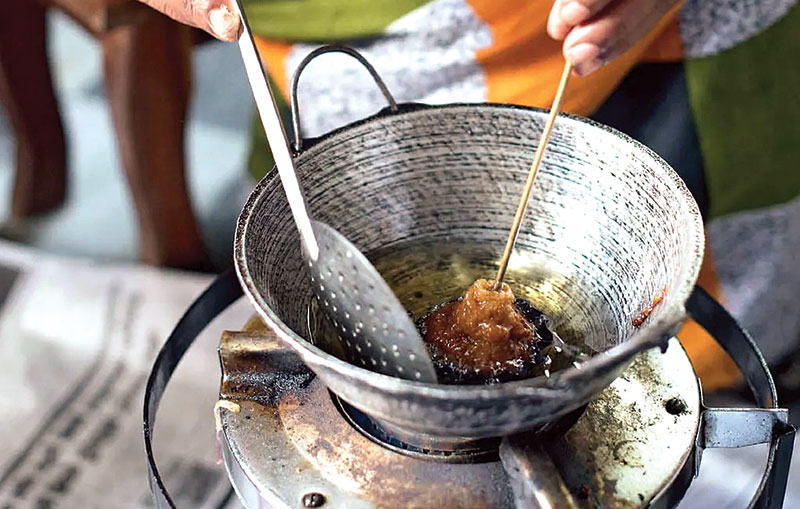
The avurudu table of any Lankan home is complete only when it is laden with kevum. Dating back to ancient times, many types of kevum are chronicled even in our classical texts. The Dutch rulers of the island are said to have relished them, some even asking if they grew on trees… A delicacy which was offered to visiting dignitaries, kevum was revered by our kings even in the battle field not only as an energy-booster but also as a wound disinfectant.
BY RANDIMA ATTYGALLE
The culmination of Avurudu preparations in my childhood with my grandparents was marked by the ritual of Kevum-making. Athamma would ‘book in advance’ the kevum specialist Soida Hami (Soida aachchi to us children), and install a special hearth in her back verendah for the grand moment. I would watch Soida aachchi in wonderment as her thick batter of rice flour and best of kithul treacle shaping into kevums in a hot wok of coconut oil. The long kevum koora in her nimble fingers would achieve the feat of the perfect konde. It was almost a rite of reverence, so much so I was not supposed to talk to her until the first batch of Konda-kevums was completed. Like many old-folk of her vintage, Soida aachchi believed that talking while the first few kevums are done would result in a flawed product.
She would then place each perfect Konda kevuma on a banana leaf for the excess oil to drain. Once the whole exercise was completed, she would place Konda-kevum in large earthen pots and store them in the dum messa or the storage area above the main hearth of the kitchen. She would spare me only one kevuma and the rest had to wait until the auspicious time on avurudu day!
Travellers’ records
Robert Knox an English sailor who was held in captive in the court of the Kandyan King Rajasinghe II and one of the prolific chroniclers of ancient Ceylon in his famous work, An Historical relation of the Island Ceylon documents on the sweet meats of Lankans with a special account of kevum.
‘They have several sorts of sweet-meats. One they call Caown. It is like to a fritter made of Rice-flower and Jaggory. They make them up in little lumps and lay them upon a leaf, and then press them with their thumbs and put them into a frying-pan and fry them in Coker-nut Oyl or Butter. When the Dutch came first to Columba, the King ordered these Caown to be made and sent to them as a royal treat. And they say, the Dutch did so admire them, that they asked if they grew not upon trees, supposing it past the Art of man to make such dainties.’ (Spelling as in the original Knox)
The account of Knox enables rich insights into this wonder of a sweet meat which enthralled many a traveller to the island including dignitaries. The European trader Cosmas who visited Ceylon in 545-550 AD, documents that along with gems, Kevum and Kalu dodol from Ceylon were taken to the Roman court of Emperor Claudius during the sixth century.
- Mun kevum
- Konda kevum
- Athirasa
Classical literature
Kevum dates back to ancient times and our classical texts such as the Ummagga jatakaya, Pujawaliya and Saddharma Ratanawaliya bear evidence to this fact. “Originally known as poopa this sweet meat came to be known as kevum in the Dambadeniya-Kurunegala era. Jathaka atuwa getapadaya mentions 18 kinds of sweet-meats found in the ancient Sri Lanka and among them are several types of kevum such as sendi kevum, mal kevum, athirasa, pena kevum, raa-kevum,” says Prof. Kusumalatha Lankamulla from the Department of Sinhala and Mass Communication at the University of Sri Jayewardenepura.
This scholar with research interest in Culture, Traditional and Modern Literature goes onto note that Mahawamsa in its 32nd chapter refers to two types of kevum in the context of alms offered by King Dutugemunu. The two types- thel kevum and maha de kuvum mentioned, were fried in ghee. “Many of our classical texts mention kevum in multiple festive contexts beyond avurudu. In Ummagga jathakaya, kevum is mentioned as a fitting gift to be taken when visiting parents. Saddharma Ratanawaliya refers to boxes of kevum or kevum pesa.“
An energy booster
Among the popular kevum types found today are Konda kevum, athirasa, mun-kevum, naran kevum and hendi-kevum. Although the ingredients used for each type may slightly differ, rice flour and treacle (now largely replaced with sugar) remain common to all. The much sought after Konda kevum which is relatively a later addition to the range of kevum found here at home is believed to have originated during the Kandyan period says Prof. Lankamulla. “During the Kandyan period, men were prohibited from cutting their hair off and they had to tie it in form of a knot on top of their heads. Konda kevuma is believed to have been inspired by this practice.”
Traditionally, Sinhalese soldiers were given a bag of kevum when going to war. History has it that King Dutugemunu went a step ahead and used kevum to treat wounded soldiers. His army used to prepare kevum months in advance and keep them exposed to air so that the mould can grow on them.
This mould in today’s language had ‘antibiotic properties’ and was used on the wounds of the soldiers to prevent them from festering. “In a bid to undermine the pride of place given to kevum as a super food by the locals, the British coined the famous derogatory adage: ‘Sinhalaya is a fool but is an ace at eating kevum’. (Sinhalaya modaya-kevum kanna yodaya)
Steeped in tradition
Superstitious beliefs surrounding the process of kevum-making are not uncommon and these vary from region to region in the island, says Prof. Lankamulla. Regardless of the region, several common traditions were followed by our ancestors and these still continue to be observed in several parts of the country, she says. “The frying pan with coconut oil to prepare the kevum was kept on fire at an auspicious time and village matriarchs who were highly skilled were mobilized for the occasion. Women also believed that they must refrain from talking when the first kevum is being made. For centuries, the first kevum was considered to be the ‘konduru kevum’, dedicated to the sledge-fly or the konduruwa. The village women would hang the first kevum up for the insects so that the rest would be unspoilt.”
With the passage of time, many Lankans, particularly city-dwellers depend on commercially available avurudu kevili including kevum. Although kevum is synonymous with avurudu, today people get to enjoy it round the year thanks to many sweet meat kiosks found in cities. Although these outlets have best sales during avurudu, they get plenty of orders from Lankans travelling abroad or coming home for vacation at other times of the year as well.
One such die-hard kevum fan is Uthpala Ranatunga from Ottawa, Canada. “My Loku amma (oldest aunt) makes it a point to pack me a parcel of best quality Konda kevum to take with me whenever I’m in Sri Lanka for a vacation.
I deep-freeze them for longer use and eat them sparingly,” says Uthpala to whom kevum is always a strong reminder of home. “Each time I indulge in them I feel nostalgic and miss home.”
Kevum is an integral part of the Lankan culture, finding its way from ancient classical literature to that of the contemporary including children’s literature and arts. The much-loved sweet meat is celebrated in the work of Sybil Wettasinghe – the iconic story teller and illustrator.
Come avurudu, we often hear the intonation of Lionel Ranwala, the eminent musician, vocalist and an authority on Sri Lankan folk music, whose tribute to the enduring legacy of this delicacy is one of the best in our times:
Me avurudu kale -sinaha weyan rale
Thel ihirunu kewum gediya wage…
Fashion
Festive glamour at Nethara

Nethara Collection ,is a world of export quality garments in Diulpitiya, Boralesgamuwa, is infused with an ultra festive spirit this season catering to the women of today. Unbelievable offers and discounts from Nethara for Sinhala anTamil new year. On selection of women’s clothing, ranges from casual options to formal occasion wear,all at friendly prices,to enhance your wardrobe this festive season.
Nethara collection, started small in 2017, but soon it outgrew, today with an ever increasing customer base, branded and non branded clothing this shopping centre has become very popular. Export quality , stylish dresses, crop tops, fancy blouses, trousers and many more to flaunt yourself and enhance your wardrobe.Their extensive collection, maintain low pricing allowing everybody to have a chance to shop till they drop dead. From casual wear to formal wear,they have women to men’s items like tee shirts, shirts for every occasion.
Nethara clothing has long remained a name that has struck a chord with Sri Lankan shoppers. “We believe our success has been based up on the premise that absolute sincerity towards customers and no matter what the economic situation that prevails, we try our level best to keep our prices low and within everybody’s budget, said managing director, Nethara Collection Sampath Kumara.
This April season Nethara collection brings an all new collection of export quality seasonal wear. Celebrate the season with exclusive offers made just for you! Dresses, blouses, casual, formal wear denim, men’s shirts and many more… world of limitless style and joy!
This festive season Nethara unwraps a celebration of warmth, style and sophistication. Immense yourself in a vibrant festive atmosphere as you explore thier collection under one roof 345 Boralasgamuwa With a focus on quality, affordability and customer satisfaction, Nethara export quality boutique invites you to celebrate the Sinhala and Tamil New Year in style.
(Zanita)
Life style
Sri Lanka tourism unveils strategic vision
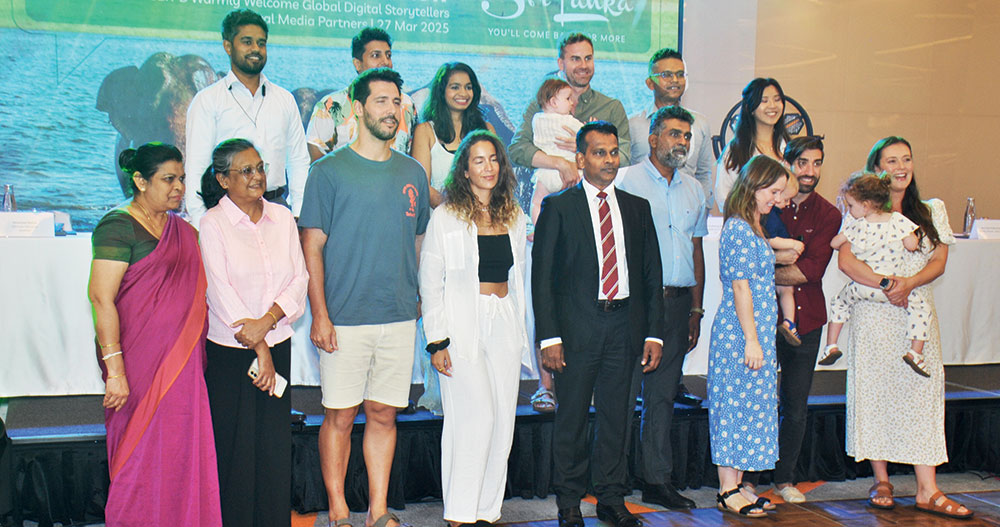
Sri Lanka Tourism Bureau hosted a landmark event at cinnamon Life for an ambitious campaign to spotlight Sri Lanka as a top travel destination. This initiative hosted international influencers and local media to capture the unique charm of Sri Lanka’s destinations. These travel influencers will share thier real time content across platforms like Instragrams Tik Tok and youtube amplifying Sr Lanka as a must visit destination. Many media personal, bloggers and influencers participated in this event which will take them on a tourism travel featuring some of Sri Lanka’s top destination.
Sri Lanka Tourism Promotion Bureau (SLTPB) hosted a landmark event at the Cinnamon Life Hotel, Colombo. The event was led by . Deputy Minister of Tourism, Prof. Ruwan Ranasinghe, with the participation of SLTPB Chairman Buddika Hewawasam, officials, travel influencers and their families, as well as journalists specializing in tourism sector reporting. The gathering set the stage for transformative initiatives aimed at bolstering Sri Lanka’s tourism sector and redefining its global image.
In his opening remarks, Buddika Hewawasam underscored the challenges facing the tourism sector, particularly the seasonal dip in arrivals during the summer months. “The next few years will be the most challenging period for all of us,” Hewawasam stated, emphasizing the need for international collaboration and strategic development. He further highlighted the critical role played by international travel influencers and media professionals in raising awareness of Sri Lanka’s hospitality and inspiring tourists worldwide to visit.
- Dileep Mudadeniya
- Deputy Minister of TourismProfess or Dr Ruwan Ranasinghe
- Guests
The Deputy Minister of Tourism, Prof. Ruwan Ranasinghe, detailed the innovative nature of the campaign and its importance in showcasing Sri Lanka’s rich heritage, natural beauty, and diverse travel experiences to mainstream and emerging tourism markets.
During the event, several prominent travel influencers shared their thoughts about Sri Lanka’s uniqueness as a destination. They highlighted that Sri Lanka is a country where travellers don’t need to worry about finding incredible experiences—nature has already done the hard work. The influencers remarked on Sri Lanka’s unparalleled diversity, noting that it is possible to experience a range of climates within just a few hours by travelling to different parts of the island. From sun-soaked beaches to misty highlands, and from lush forests to cultural treasures, Sri Lanka offers a world of adventures in a compact and accessible setting.
In comparison to destinations like Bali, which some influencers noted as overcrowded, Sri Lanka stands out with stable and balanced tourism activities. The event attendees were thrilled by the country’s warm hospitality, authentic DDirector cuisine with an impressive variety, long history, and rich culture. These qualities make Sri Lanka not only inviting but genuinely unforgettable for visitors.
The travel influencers in attendance expressed strong confidence in their ability to share this powerful message with the world. They were determined to shape international travel trends by showcasing Sri Lanka’s unique appeal, while also helping to attract new types of guests. The influencers represented a diverse range of travel segments, including family travellers, solo female travellers, honeymooners, and adventure seekers. Their efforts were supported by Sri Lanka Tourism officials and journalists representing both local and international media agencies.
The ‘Sri Lanka, A Story for Every Season’ campaign represents SLTPB’s first large-scale effort to boost summer travel through digital storytelling and influencer collaboration.
Featuring a curated destination familiarization tour, the campaign will spotlight wildlife safaris, cultural heritage, spiritual pilgrimage sites, scenic landscapes, and adventure tourism. Influencers will produce high-impact content for platforms like Instagram, YouTube, and Facebook, reaching over 2.2 million travel enthusiasts globally.
Sri Lanka Tourism shared impressive winter peak season results, with international arrivals reaching 665,295 by March 23, 2025—a marked increase compared to the previous year. These figures illustrate the sector’s potential for growth, and the campaign aims to sustain momentum throughout the summer months.
The event was a call to action for stakeholders to unite in elevating Sri Lanka’s global tourism appeal. With plans to generate over LKR 32 million worth of media coverage and connect with diverse travel segments, the campaign underscores Sri Lanka’s commitment to redefining itself as a leading destination for year-round travel.
By Zanita Careem
Pix by Darmasena Welipitiya
-

 Business1 day ago
Business1 day agoColombo Coffee wins coveted management awards
-

 Features2 days ago
Features2 days agoStarlink in the Global South
-

 Business3 days ago
Business3 days agoDaraz Sri Lanka ushers in the New Year with 4.4 Avurudu Wasi Pro Max – Sri Lanka’s biggest online Avurudu sale
-

 Business4 days ago
Business4 days agoStrengthening SDG integration into provincial planning and development process
-

 Business3 days ago
Business3 days agoNew SL Sovereign Bonds win foreign investor confidence
-

 Sports5 days ago
Sports5 days agoTo play or not to play is Richmond’s decision
-

 Features2 days ago
Features2 days agoModi’s Sri Lanka Sojourn
-

 Sports4 days ago
Sports4 days agoNew Zealand under 85kg rugby team set for historic tour of Sri Lanka

